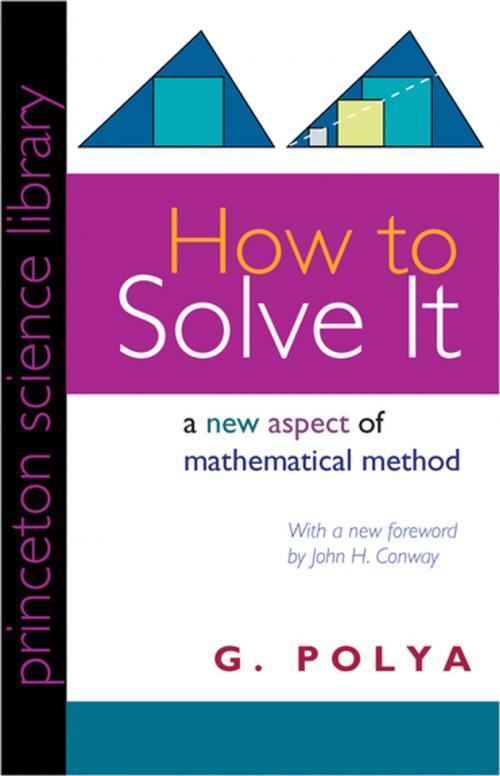How to Solve It
A New Aspect of Mathematical Method
Nonfiction, Science & Nature, Mathematics, Logic, Geometry| Author: | G. Polya | ISBN: | 9781400828678 |
| Publisher: | Princeton University Press | Publication: | September 2, 2008 |
| Imprint: | Princeton University Press | Language: | English |
| Author: | G. Polya |
| ISBN: | 9781400828678 |
| Publisher: | Princeton University Press |
| Publication: | September 2, 2008 |
| Imprint: | Princeton University Press |
| Language: | English |
A perennial bestseller by eminent mathematician G. Polya, How to Solve It will show anyone in any field how to think straight.
In lucid and appealing prose, Polya reveals how the mathematical method of demonstrating a proof or finding an unknown can be of help in attacking any problem that can be "reasoned" out--from building a bridge to winning a game of anagrams. Generations of readers have relished Polya's deft--indeed, brilliant--instructions on stripping away irrelevancies and going straight to the heart of the problem.
In this best-selling classic, George Pólya revealed how the mathematical method of demonstrating a proof or finding an unknown can be of help in attacking any problem that can be "reasoned" out--from building a bridge to winning a game of anagrams. Generations of readers have relished Pólya's deft instructions on stripping away irrelevancies and going straight to the heart of a problem. How to Solve It popularized heuristics, the art and science of discovery and invention. It has been in print continuously since 1945 and has been translated into twenty-three different languages.
Pólya was one of the most influential mathematicians of the twentieth century. He made important contributions to a great variety of mathematical research: from complex analysis to mathematical physics, number theory, probability, geometry, astronomy, and combinatorics. He was also an extraordinary teacher--he taught until he was ninety--and maintained a strong interest in pedagogical matters throughout his long career. In addition to How to Solve It, he published a two-volume work on the topic of problem solving, Mathematics of Plausible Reasoning, also with Princeton.
Pólya is one of the most frequently quoted mathematicians, and the following statements from How to Solve It make clear why: "My method to overcome a difficulty is to go around it." "Geometry is the science of correct reasoning on incorrect figures." "In order to solve this differential equation you look at it till a solution occurs to you."
A perennial bestseller by eminent mathematician G. Polya, How to Solve It will show anyone in any field how to think straight.
In lucid and appealing prose, Polya reveals how the mathematical method of demonstrating a proof or finding an unknown can be of help in attacking any problem that can be "reasoned" out--from building a bridge to winning a game of anagrams. Generations of readers have relished Polya's deft--indeed, brilliant--instructions on stripping away irrelevancies and going straight to the heart of the problem.
In this best-selling classic, George Pólya revealed how the mathematical method of demonstrating a proof or finding an unknown can be of help in attacking any problem that can be "reasoned" out--from building a bridge to winning a game of anagrams. Generations of readers have relished Pólya's deft instructions on stripping away irrelevancies and going straight to the heart of a problem. How to Solve It popularized heuristics, the art and science of discovery and invention. It has been in print continuously since 1945 and has been translated into twenty-three different languages.
Pólya was one of the most influential mathematicians of the twentieth century. He made important contributions to a great variety of mathematical research: from complex analysis to mathematical physics, number theory, probability, geometry, astronomy, and combinatorics. He was also an extraordinary teacher--he taught until he was ninety--and maintained a strong interest in pedagogical matters throughout his long career. In addition to How to Solve It, he published a two-volume work on the topic of problem solving, Mathematics of Plausible Reasoning, also with Princeton.
Pólya is one of the most frequently quoted mathematicians, and the following statements from How to Solve It make clear why: "My method to overcome a difficulty is to go around it." "Geometry is the science of correct reasoning on incorrect figures." "In order to solve this differential equation you look at it till a solution occurs to you."















